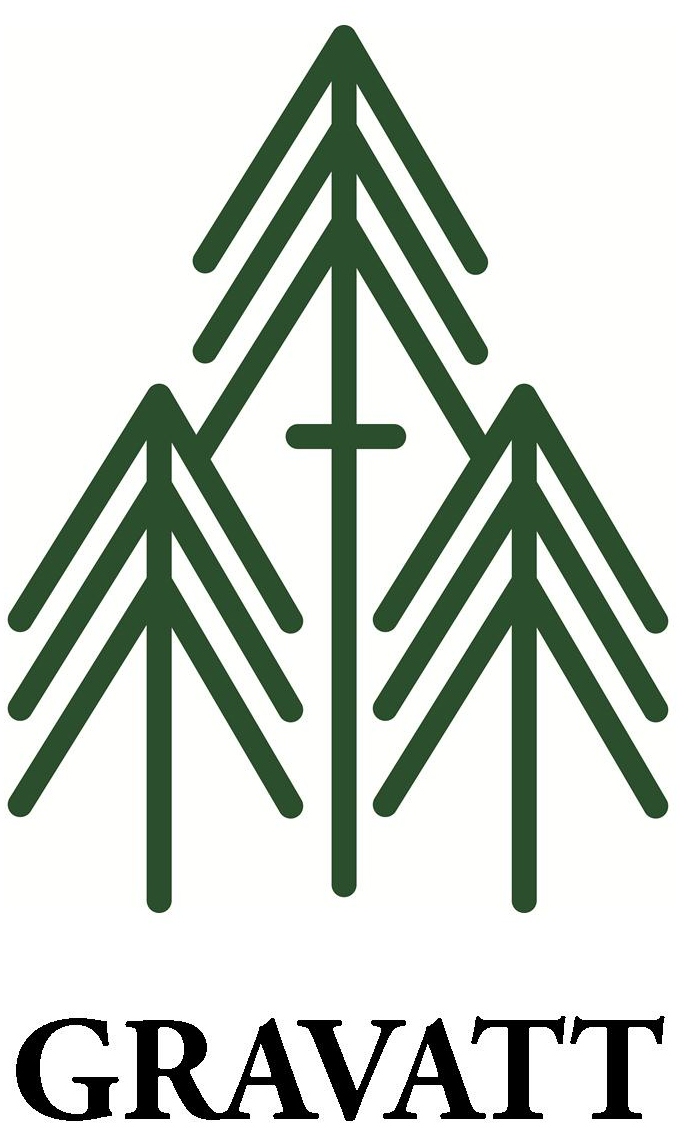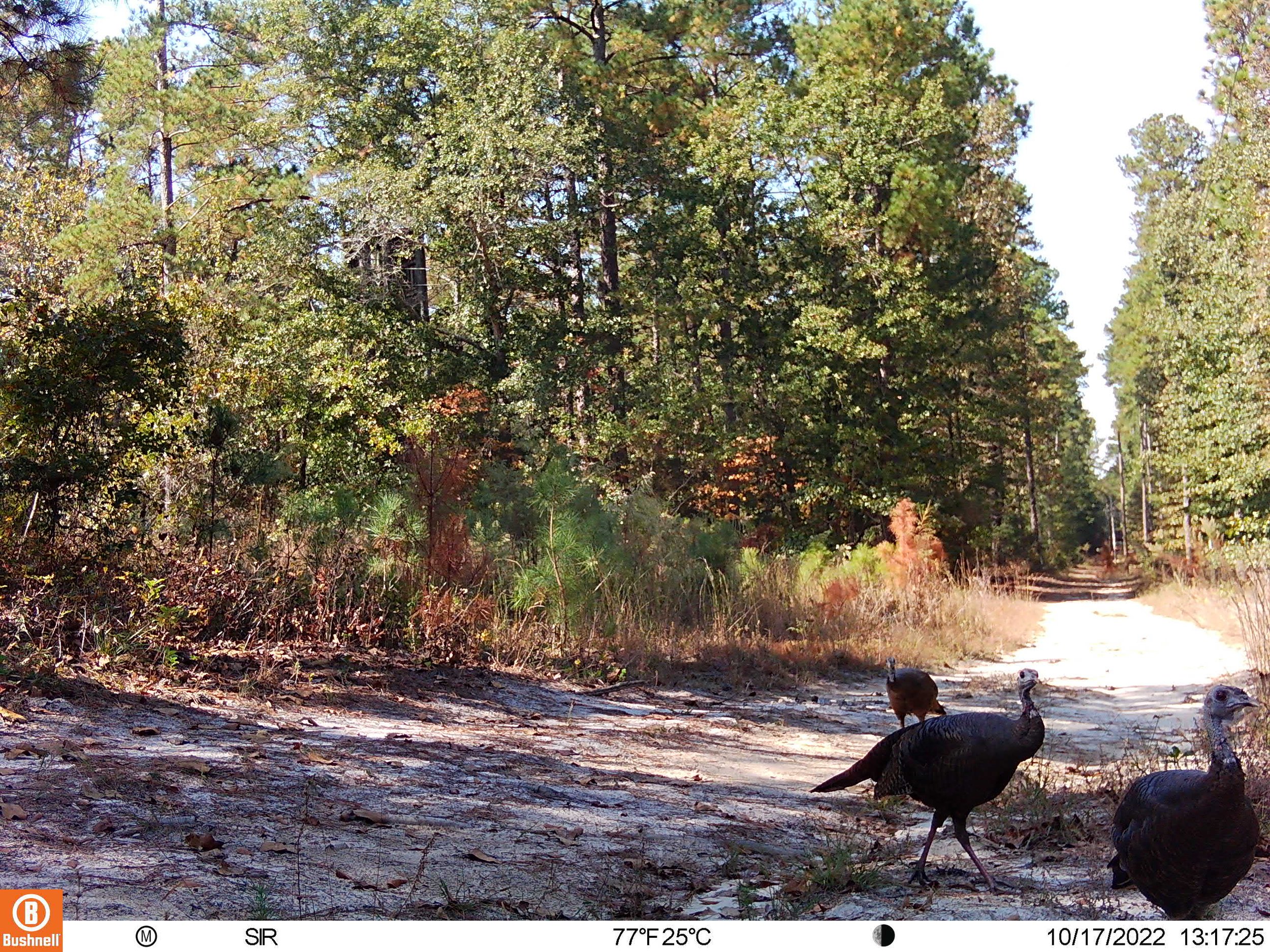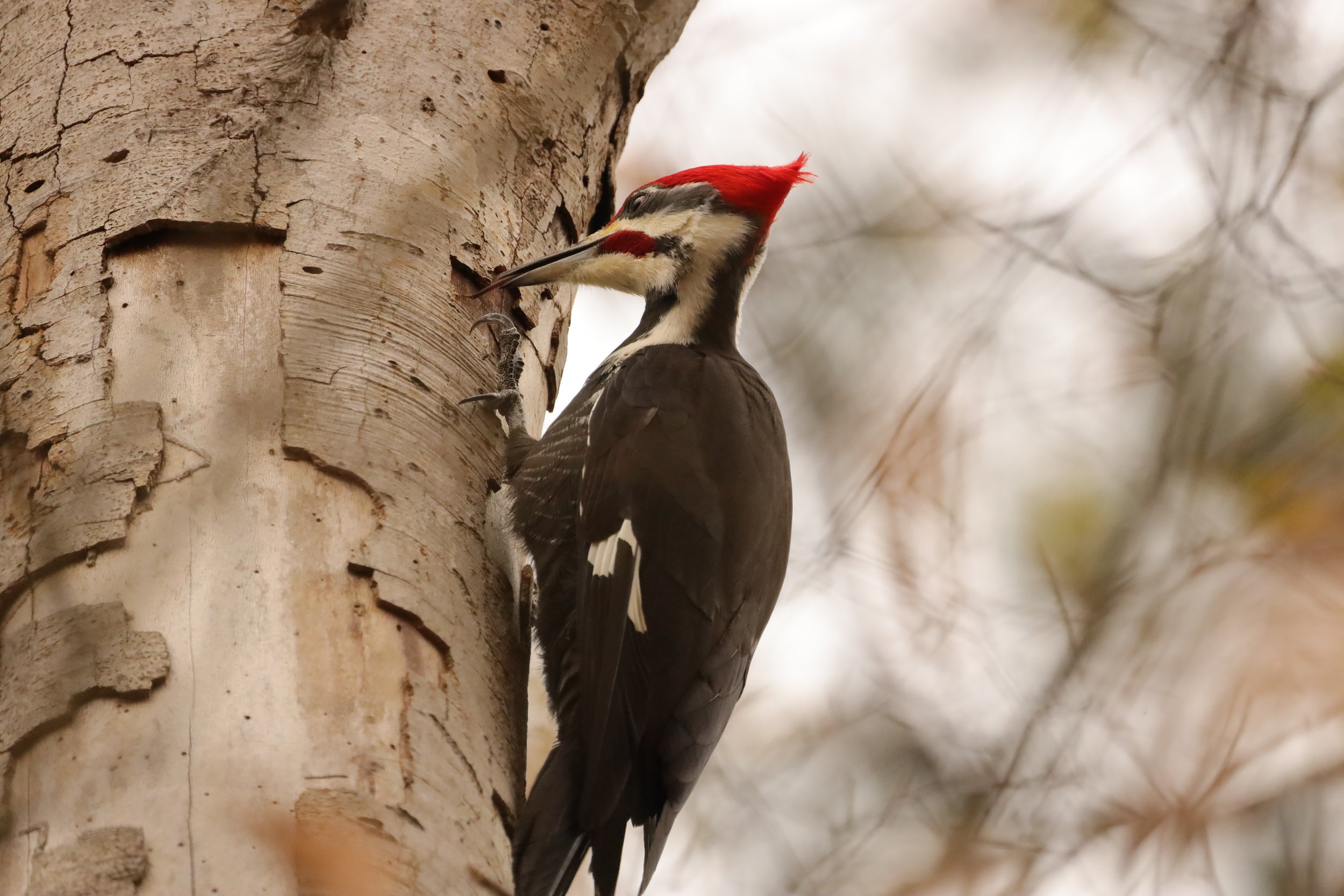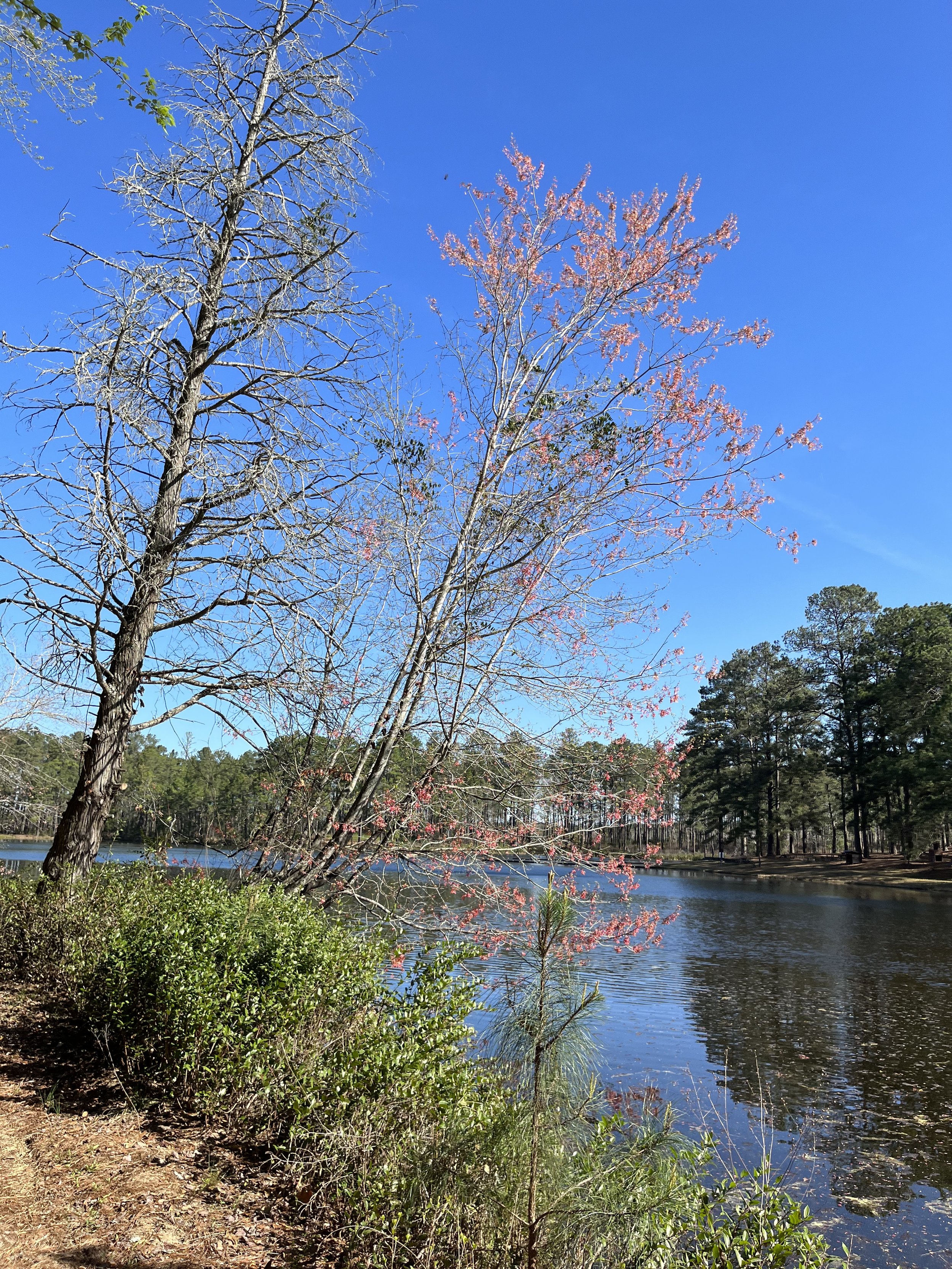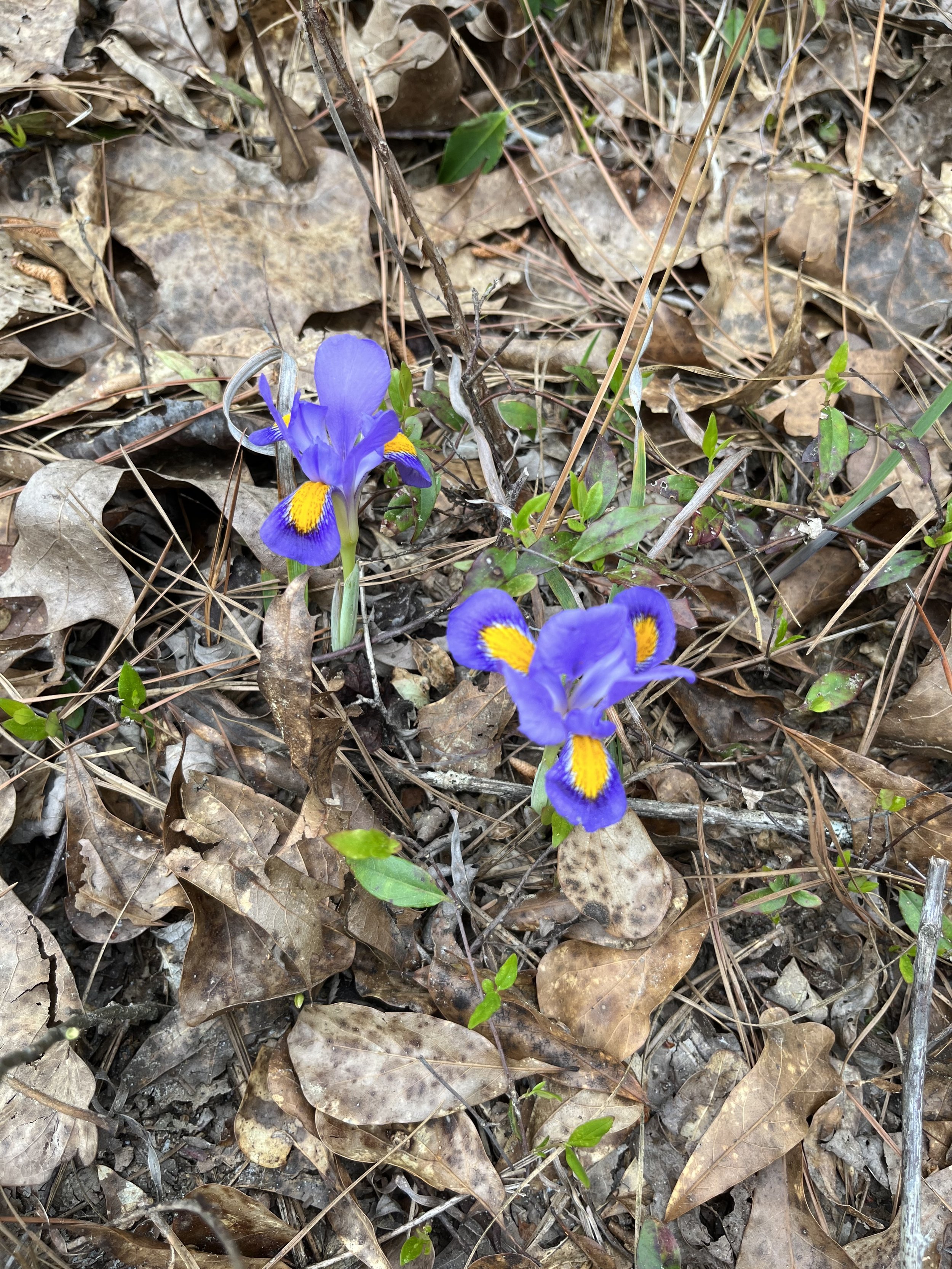The Adventures of Little Fawn, Part 1
/This is the story of the creatures of Gravatt’s Forest. All photos of birds were captured by staff alumni Samuel Robinson. All other photos were captured by Gravatt trail cameras.
Early in the morning, right as the sun’s rays pierce the clouds and hit the forest floor, a family of deer are already stirring. Dawn and dusk they scan the woods for palatable vegetation.
Deer munch and munch till their hearts are content and lie low to hide during the day and in the deep of night in case predators are also looking for a meal. Having eaten all the good grasses and leaves it’s time for a midday nap, ah the good life of a Gravatt deer. Young little fawn is restless though, she does not want to lie down and nap, there is too much to explore! She sneaks away from her family’s bedding area and wanders down the sandy road.
“Turkeys! Oh what fun!” Little Fawn thinks.
“Hey Turkeys! What are you looking for? Insects? Acorns? Shiny rocks?! I can help you look!”
*Gobble gobble* “What? What did you say?” Old man Gobbler shouts.
“Dad he is asking us what we are looking for, sorry my dad is hard of hearing” the young turkey says.
“My name is Jake by the way, we are just heading down to the stream for water then we have to rest, it’s too hot for anymore exploring. Hey why are you still awake?” Jake asks.
“Oh, well my family always naps during the day, but there is too much to see, like you Turkeys! There is a whole world to explore!” says Little Fawn
*Gobble! “Jake, what is this armadillo saying?” Old Man Gobbler says starring deeply at Little Fawn.
“Um my dad doesn’t see too well either, well stay safe friend we’ve got to get going.” Jake says.
“COME ON DAD, LET’S GO GET WATER AND FIND A SHADY NAPPING TREE.” And just like that those Turkeys are on their way.
“Wow, what nice turkeys, I wonder who else I can find in the forest!” Little Fawn feels triumphant as she ventures down the sandy road.
The sun continues to rise high in the noon sky as Pileated woodpecker drums on in the distance. Ringing his blows from atop the tallest longleaf, *whap whap whap*. Suddenly the drilling stops…the forest is still.
“Hello friend” the cedar waxing says to Pileated woodpecker as it rests on a shrub.
“Did you find any good insects drilling into that old pine tree?”
“No, I sense something unusual in the forest…a presence I haven’t felt in a long time” Pileated woodpecker states as he scans the forest.
“Cedar waxwing we must check in with the council of feathers! You head off looking for the council members and I will greet the Queen and her most trusted guard.”
“It will be done!” and with a huff and a puff the cedar waxwing bows, however you might imagine a bird bowing, and flaps off to find his friends.
Pileated woodpecker scoots and disappears around the back of the pine tree, out of sight and off on his mission.
Near the swampy corner of Lake Henry, the wise Great Blue Heron stands poised to strike. Almost motionless he stands in the still water. Nearby a Green Heron sits up on a log, lazily scanning the water.
Nearby a Green Heron sits up on a log, lazily scanning the water.
“Hey Blue!” Green Heron says enthusiastically.
“Yes Green?” Blue Heron whispers out.
“Why are you so Great? Is it just because you are so big?”
“Green, you know I’m hunting…” Great Blue Heron cocks his head back.
“Sorry. I’ll wait” Green lets out a bored sigh and begins to twiddle their feathers.
“Phewwwww…ba-baa-baaaa…do-do-ba-dooo-do-baaa. Pffft…ehhhhh! I’m bored!”
“I am sorry to hear that, maybe try hunting?” Blue whispers. He looks deep into the water, locking eyes with his own reflects.
Suddenly, *thump, thlap, thlop* the sound of chubby webbed toes comes flapping near the water’s edge. Ah it’s the news, Bullfrog is hopping on down. This should be good, Bullfrogs always have a lot to say.
“HUMAN!!! HUMAN!! WATCH OUT EVERYBODY!! THEY’RE ON SOME WEIRD TWO WHEELED MACHINE!! RUN RUN RUUUUNNNNN!!!!”
Green Heron looks over at the water’s edge “Hello Bullfrog, just take a deep breath, in through the snout, out through the nose.”
“NO TIME” Bullfrog shouts as he takes a deep breath.
Just then a human rides past the lake, going for a bicycle ride on Sparkleberry Trail, it’s Belinda!
“OH NO!!!” Bullfrog, leaps up and *SPLASH!* right into the water.
The mirrored reflection of the Blue Heron begins to shake and ripple…
“Bullfrog! You scared away my fish! I was going to strike any second!” Great Blue Heron huffs and ruffles his feathers, all flustered and frustrated.
Cedar Waxwing swoops across the water, and lands gracefully on the log next to Green Heron.
“Green, Blue! Pileated, he…ah…a meeting…the forest…and! And!” Cedar waxwing is breathing heavily and struggling to tweet.
“Tut tut, remember, in through the beak, out through the beak.” Green Heron says as they breathe along.
“Thank you Green, you’re always so calm, but right now Pileated Woodpecker has called a meeting of the council of feathers! Right now he has gone to see the Queen. There is a presence in the forest.”
Bullfrog bubbles up from the depths and blurts out “THE HUMAN! I KNEW IT!! WE NEED TO RUN!”
Great Blue Heron lets out a deep breath and turns to the group of critters and says “No not the human, they come and go on their bicycle all the time. If Pileated woodpecker has called the council then this must be of grave importance.”
All nod solemnly, knowing that a council of feathers has not been called in nearly 75 years. Whatever this is, it must be serious…
